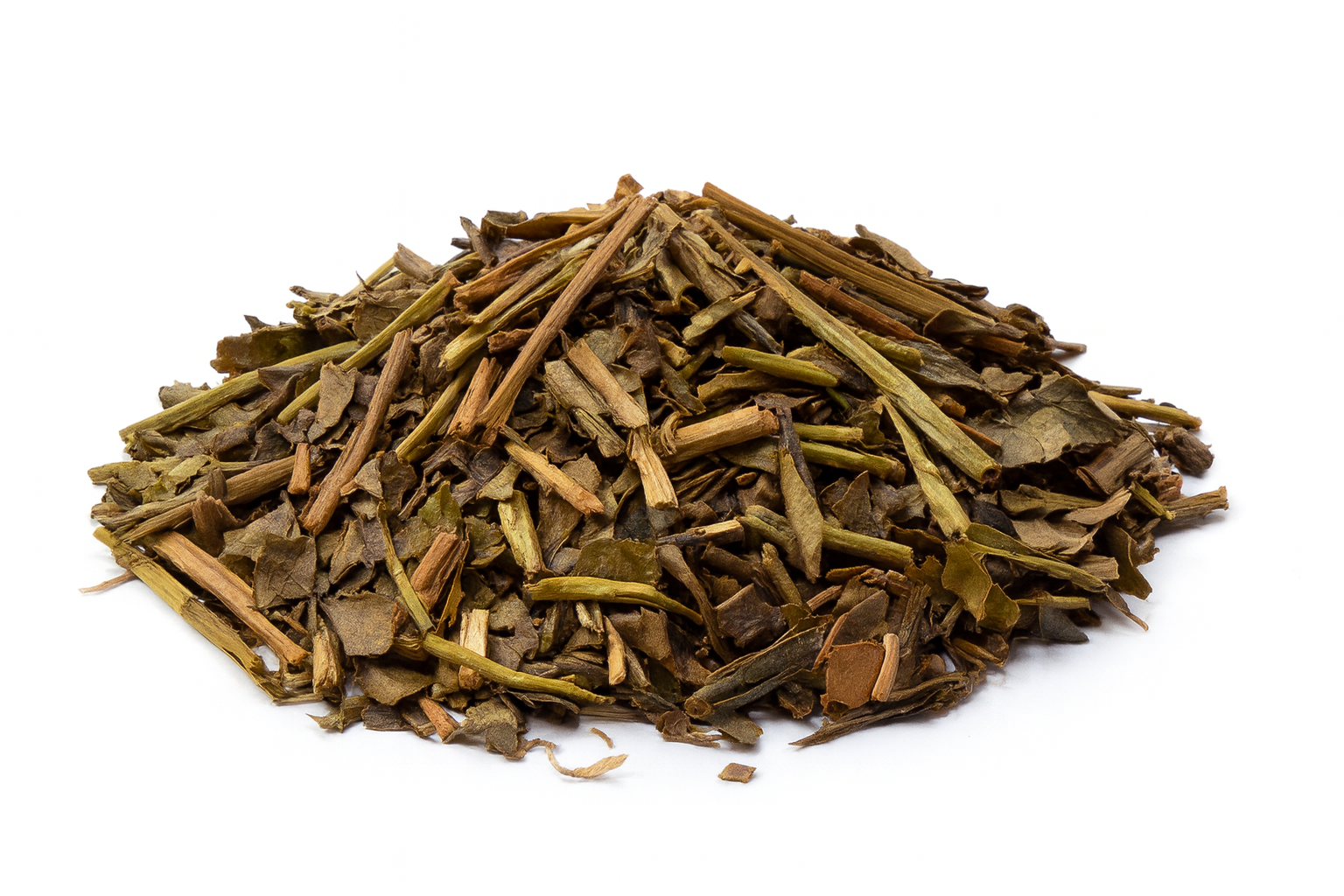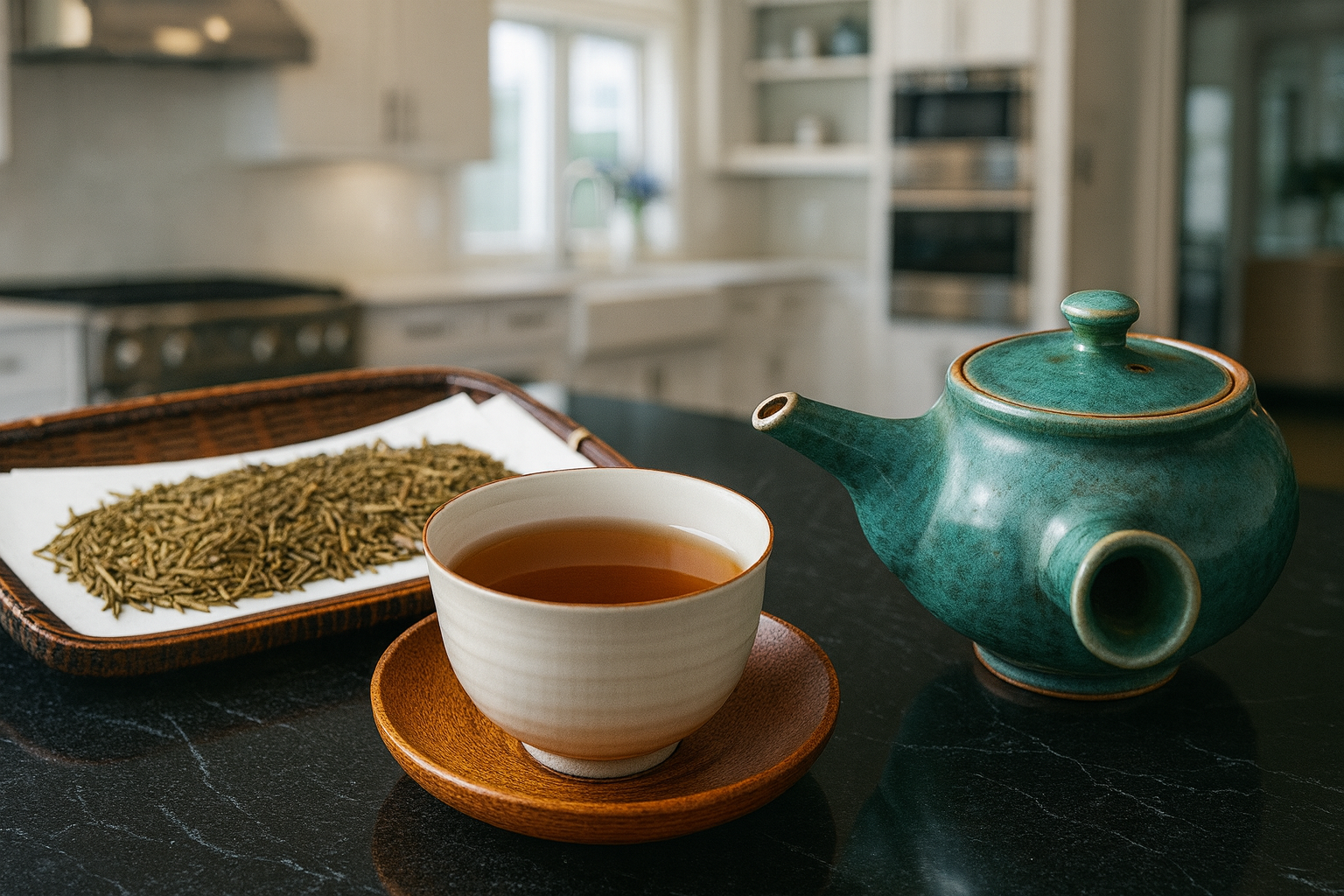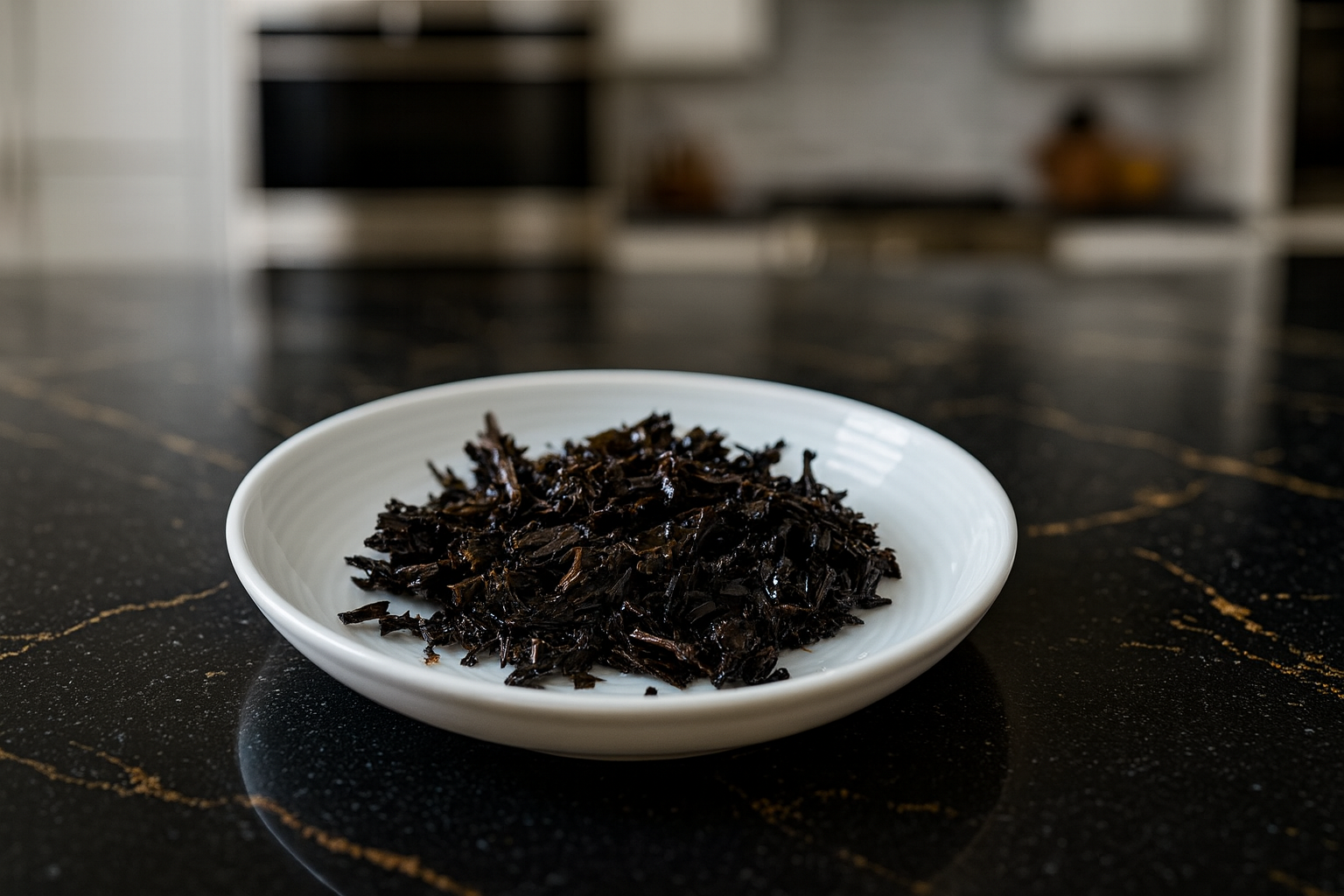Hojicha
Smooth, nutty, and low in caffeine — Japan’s comforting evening tea.
- Category: Roasted green tea (often bancha, sencha, or kukicha base)
- Origin: Japan — first crafted in Kyoto in the 1920s, now produced in Shizuoka, Uji, and Kagoshima.
- Harvest: Typically later flush bancha leaves, stems, or sencha; kukicha twigs also used.
- Grade: Everyday Hojicha; Sencha Hojicha; Kukicha Hojicha



Tasting Profile
Brewing Guide
- Tea-to-water ratio~5 g leaves per 200 ml water.
- Water temperature90–95 °C (194–203 °F) — higher than most green teas due to reduced bitterness.
- Steeping time30–60 seconds for first infusion.
- Infusions2–3 infusions; flavor shifts from deep roasted to lighter, sweeter notes.
Background & Story
Hojicha is a distinctive Japanese green tea that stands out because of its roasting process. Unlike most Japanese teas, which are steamed to preserve their grassy freshness, hojicha is roasted over high heat. This transformation creates a tea that is nutty, toasty, and slightly caramel-like, with a mellow character and very little bitterness. Its inviting aroma and gentle flavor have made it one of Japan’s most comforting everyday teas.
The origins of hojicha are relatively recent in tea history. It was first developed in Kyoto in the 1920s, when merchants began roasting leftover bancha leaves and stems over charcoal to reduce waste. The roasted tea proved popular with locals, offering a new flavor profile that was affordable, soothing, and accessible. From there, hojicha spread throughout Japan and became a household staple.
Traditionally, hojicha is made from later harvest leaves such as bancha, though sencha and kukicha (twig tea) are also common bases. Roasting lowers the caffeine content significantly, making it one of the mildest Japanese teas in terms of stimulation. This quality has long made hojicha a preferred choice for children, the elderly, and for drinking in the evening without disturbing sleep.
The roasting process also changes the appearance and chemistry of the tea. The leaves shift from green to reddish-brown, and while some catechins are reduced, new aromatic compounds like pyrazines and melanoidins develop, lending depth to its flavor and antioxidant activity. The result is a tea that feels both warming and restorative, particularly suited for cool evenings or after meals.
Today, hojicha is enjoyed in many forms. It can be brewed hot, served iced, or used in modern creations like hojicha lattes, ice cream, and desserts. Its versatility, gentle nature, and comforting roasted character ensure that hojicha continues to hold a special place in Japanese tea culture and beyond.
Benefits
- Very low in caffeine, making it suitable for evening drinking and all ages
- Rich in antioxidants that help reduce oxidative stress and support wellness
- Gentle on the stomach due to reduced bitterness and tannins
- Promotes relaxation through the calming effects of L-theanine
- Supports digestion and is often enjoyed after meals for comfort
Serving Suggestions
Pairings
- Grilled or roasted meats such as chicken or yakitori
- Savory rice dishes, including donburi or onigiri
- Lightly sweet wagashi like dorayaki or taiyaki
- Roasted nuts or sesame-based snacks
- Creamy desserts such as custard pudding or cheesecake
Teaware
- Kyusu (Japanese side-handle teapot)
- Yunomi (Japanese tea cup)
- Chazutsu (airtight tea canister)
Nutrition Facts
Serving Size: 1 cup brewed Hojicha (240 ml)
| Nutrient | Amount per Serving | % Daily Value* |
|---|---|---|
| Calories | 0 | 0% |
| Total Fat | 0 g | 0% |
| Sodium | 0 mg | 0% |
| Total Carbohydrates | 0 g | 0% |
| Protein | 0 g | 0% |
| Vitamin C | 1–2 mg | 1–3% |
| Vitamin A (beta-carotene) | Trace | <1% |
| Calcium | 2–3 mg | <1% |
| Potassium | 15–25 mg | <1% |
| Magnesium | 1–2 mg | <1% |
| Caffeine | 7–10 mg | — |
| L-theanine | 3–5 mg | — |
| Catechins (EGCG) | 10–20 mg | — |
| Polyphenols | 30–50 mg | — |
| Chlorophyll | Present (reduced by roasting) | — |
**Percent Daily Values are based on a 2,000 calorie diet.
† Compounds such as caffeine, L-theanine, catechins, polyphenols, and chlorophyll do not have established %DV but contribute to Hojicha’s gentle, soothing benefits.